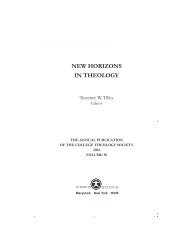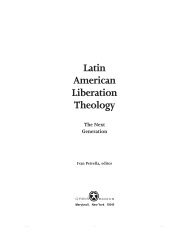CONCEPTS OF MISSION - Orbis Books
CONCEPTS OF MISSION - Orbis Books
CONCEPTS OF MISSION - Orbis Books
You also want an ePaper? Increase the reach of your titles
YUMPU automatically turns print PDFs into web optimized ePapers that Google loves.
Mission in Contemporary Missiology 5<br />
sent by the church and go forth into the whole world to carry out the task<br />
of preaching and planting the church among peoples or groups who do not<br />
yet believe in Christ. . . . The special purpose of this missionary activity is<br />
evangelization and the planting of the church among those peoples and<br />
groups where she has not yet taken root” (AG 6). The conciliar decree adds<br />
that “all over the world indigenous particular churches ought to grow from<br />
seed of the word of God, churches which would be adequately organized<br />
and would possess their own proper strength and maturity. With their own<br />
hierarchy and faithful, and sufficiently endowed with means adapted to the<br />
full Christian life, they should contribute to the good of the whole church”<br />
(AG 6). It is within this definition and purpose of mission that the council<br />
presents a broader meaning of the term “evangelization”: “Evangelization is<br />
that activity through which, in obedience to Christ’s command and moved<br />
by the grace and love of the Holy Spirit, the church makes itself fully present<br />
to all persons and peoples in order to lead them to the faith, freedom and<br />
peace of Christ by example of its life and teaching, and also by the sacraments<br />
and other means of grace” (AG 5).<br />
Though the council defines mission in simple terms of evangelization and<br />
church implantation, it is all embracing. Theologically, its foundation is<br />
divine. The emphasis is always on the mandate from Christ. Pastorally, it<br />
includes all the paths of mission itself and evangelization (in the strict sense<br />
of the word, that is, the kerygma or rather the initial proclamation to non-<br />
Christians or neophytes), and the implanting of the church as a sign of its visible<br />
presence among any people and place. Furthermore, it embraces the issue<br />
of integral development of humanity as it relates to the church’s evangelizing<br />
mission. Through her life and teaching the church brings the freedom and<br />
peace of Christ to people. Again, by means of the sacraments and other<br />
means of grace, the church makes available to people those means established<br />
by Christ for the sanctification and the eschatological salvation of<br />
humanity (see Oborji 1998, 58).<br />
In this theology of mission, the council also speaks of the nature and foundation<br />
of the church in relation to missionary activity: “The Church is missionary<br />
by nature” (AG 2). The basis of the church’s missionary nature is the<br />
divine mandate that it has been “sent to the nations to be the universal sacrament<br />
of salvation” (AG 1). The two distinctive characteristics of the church’s<br />
mission are preserved here. First, both the church and its mission are defined<br />
in distinctive instrumental terms, “in the service of and in the function of the<br />
divine intervention in favor of all humanity of all times and of the whole<br />
world.” Second, the mission of the church is given its ultimate theological<br />
foundation, “the Trinitarian mystery itself, thus coming as a historical extension,<br />
from God’s eternal saving plan which was expressed in sending the<br />
Word made flesh in Jesus Christ and in sending the Holy Spirit, with the<br />
Father as the original supreme source” (Nunnenmacher 1993, 118).
















